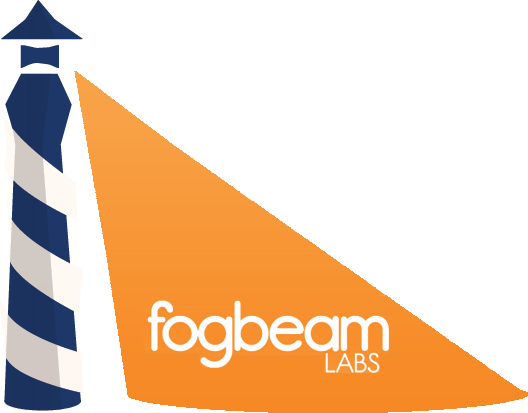What Is Enterprise 2.0
There are many definitions of "Enterprise 2.0" but most definitions focus on certain common aspects, which include user generated content, social features, a collaborative nature, and a lack of preordained structure. Andrew McAfee, widely regarded as the originator of the term, defines it as:
The use of emergent social software platforms within companies, or between companies and their partners or customers; where social software enables people to rendezvous, connect or collaborate through computer-mediated communication and to form online communities, platforms are digital environments in which contributions and interactions are globally visible and persistent over time, and the software contains mechanisms to let the patterns and structure inherent in people’s interactions become visible over time.
Examples of Enterprise 2.0 software include:
- wikis
- blogs
- enterprise social networks
- enterprise tagging / folksonomy
- information discovery platforms
- news / feed aggregators
- discussion forums
- prediction markets
Why Should I Care About Enterprise 2.0
Enterprise 2.0 software provides capabilities which are crucial to supporting enterprise agility, knowledge transfer, collaboration, and innovation, as well as "learning organization" initiatives. These capabilities, extended "beyond the firewall", represent the evolution of the old extranet idea, and facilitate a deeper, more meaningful and more strategic relationship with customers, suppliers, partners, and the external environment.
Collaborative Filtering leverages the "Wisdom of Crowds" effect within your organization, allowing the collective intelligence of your organization to emerge as employees collaborate, share, discuss, filter, rate and tag information and data. When everyone has real-time access to the collective intelligence of the firm, more and better ideas are generated for innovative products and services, teams begin to break through walls that formerly separated silos within the firm and now work together in a synergistic fashion, road-blocks to the execution of strategic initiatives are identified and removed, and the entire enterprise begins to learn and react faster and with greater alignment to the overall corporate strategy.
How Can Enterprise 2.0 Benefit My Organization
The benefits of Enterprise 2.0 are manifold, but a few of the top ones include:
Expertise location - an enterprise social network with employee profile and interests features, and the ability to "tag" users with semantic assertions about their skills, knowledge, and experience, facilitates rapid access to expertise within the organization, by making it simple and efficient to search for users with specific know-how. This capability supports more rapid problem resolution, better customer service, faster cycle times and improved productivity across the board.
Corporate blogging - enterprise blogs, coupled with semantic markup, RSS/Atom feeds, and advanced enterprise search capabilities, represent a better channel for distributing "broadcast" information, which is meant to be propagated to large groups, or the entire enterprise. Email can then be reserved for directed, point-to-point or small group exchanges, keeping inboxes uncluttered and manageable. Blogs make it easier to embed rich hypermedia content, links and interactive elements in messages, and support discussion, tagging, and rating of posts in a way that email does not.
Corporate wikis - wikis are one of the best channels for allowing collaborative editing of content, due to their ease of use and open nature. Nearly everyone is familiar with Wikipedia, which is surely one of the greatest success stories of the Internet. Members of your organization will use the same tools to create, remix, reuse and share content, which reduces the friction involved in producing everything from "content based marketing" articles, to marketing plans, to engineering "post mortem" reports, and nearly any other type of document you will need to generate. Wikis free you from the hassle of emailing Word documents, Excel spreadsheets, Powerpoint decks, PDFs and other documents around, ends the "who has the latest version of this report?" game, and avoid "in flight" collisions, all of which improve productivity.
Internal community platforms - Discussion forums and other community tools support knowledge management, team collaboration, group ideation and provide an easy to use, online presence for "Communities of Practice". Small groups and teams work together with less conflict and greater productivity when armed with capabilities that enhance their natural tendency to share knowledge and collaborate.
Of course, this is not an exhaustive list of the benefits of Enterprise 2.0 technologies. And moving beyond Enterprise 2.0, when you combine "social" tools with BPM, Workflow Automation and a Service Oriented Architecture, your enterprise develops the rich suite of capabilities needed to improve operational excellence, sense & respond in reaction to environmental conditions, and to learn and adapt at Internet speed.
How Do I Implement Enterprise 2.0
Fogbeam Labs offer a rich portfolio of Open Source Enterprise 2.0 products, including Quoddy, our Enterprise Social Network,
Neddick, our Information Discovery Platform, and Heceta, our Enterprise Search Engine. Featuring advanced
Semantic Web based capabilities, scalability based on a Java TM JVM foundation, and business
process & workflow integration through our Business Events Subscription engine, we provide a world-class
suite of tools for adopting Enterprise 2.0. We also provide associated services and consulting to enhance
your Enterprise 2.0 initiative.
Please contact us today for more details.
See Also
External Links
- Andrew McAffee Blog on Enterprise 2.0
- Enterprise 2.0 entry @ Wikipedia
- Enterprise Social Software entry @ Wikipedia
Citations
Some content on this page is based on the corresponding Wikipedia entries, as well as the blog of Andrew McAffee.
